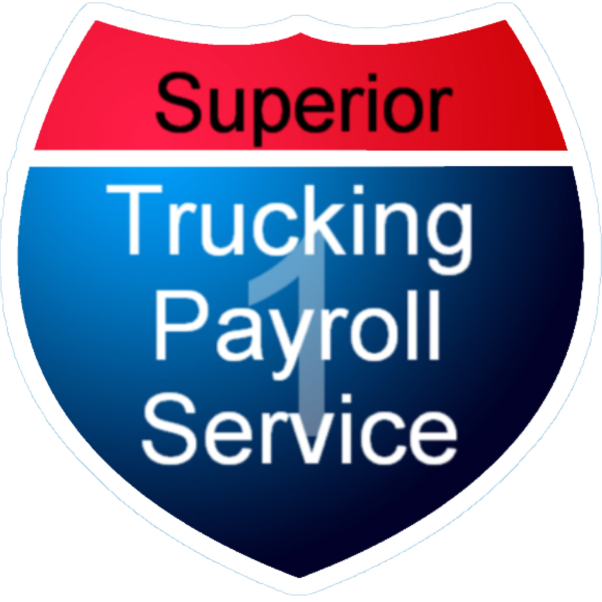Are you just using your payroll system to pay drivers and file taxes?
What if it could also help you save money and run your fleet more efficiently?
Most trucking companies don’t realize their payroll data holds powerful insights that go far beyond paychecks.
In this article, we’ll show you how tracking mileage through your payroll system can reveal costly deadhead miles, spot hidden detours, and even help you recognize top-performing drivers—all with data you already have.

What Mileage Types Trucking Companies Should Track
Some companies pay drivers for all miles. Others pay only loaded miles. And some track hub miles, which come from the truck’s odometer. These different types of mileage tell different stories—and the data adds up fast.
Here’s the key: If you’re tracking hub miles, you can compare them to your billed miles. This tells you how many deadhead miles you’re running—miles you’re not getting paid for.
Let’s say you run a route from Chicago to Dallas. If the billed miles are 950 but your driver’s hub miles show 1,050, you’ve got 100 extra miles in there. Over time, that adds up.

How to Reduce Deadhead Miles by Analyzing Routes
Many companies look at deadhead miles in total. That’s a good start—but if you look at deadhead by each run or by roundtrip, you’ll get a better picture.
You might find that one lane always has a high deadhead rate. Maybe there’s a better lane you could run that brings in more money for fewer miles. Or maybe it’s time to find a backhaul to cover those empty miles.
This kind of data helps you make smart choices about which lanes are worth your time—and which ones are just burning fuel.
How Untracked Driver Detours Waste Fuel and Money
Mileage data can also help you spot something many fleets miss: detours.
Not the kind caused by road work. We’re talking about drivers taking different routes that add extra miles, even if you’re only paying based on PC Miler or zip-to-zip miles.
Let’s say two teams run the same 5,000-mile route. One team logs 5,000 miles. The other logs 5,250 miles. That’s a 5% difference, or 250 extra miles. Over a year, that could be 13,000 extra miles and 2,000 gallons of diesel—and the driver isn’t getting paid more. But you’re still paying in fuel, wear and tear, and maintenance.
If you ask drivers why their miles are higher, they might say things like, “My route has better roads” or “less traffic.” That might be true—but it’s still your truck, your fuel, and your bottom line.
Use Payroll Mileage Tracking to Celebrate Driver Milestones
Here’s another smart use of mileage data: recognizing your drivers.
If you’re tracking each driver’s miles every pay period, it’s easy to know when someone hits a big milestone—like one million miles. That’s a big deal, and something worth celebrating.
You can give them a shoutout in your company newsletter or recognize them at a meeting. You can even post a leaderboard so drivers see who’s getting close to the next big number.
Recognition goes a long way. It boosts driver retention and shows your drivers that you’re paying attention and that you care.
Extra Benefits of Tracking Mileage Through Payroll Systems
There are other smart ways to use your payroll and mileage data, such as:
- Planning better routes: Spot patterns in delays or high-mile runs.
- Compare team vs. solo efficiency: See how driver setups impact total mileage.
- Improve dispatch scheduling: Use past runs to better plan future trips.
The more data you track, the more useful insights you get.
Why Payroll Data Should Be Part of Your Fleet Strategy
You already have the data—you’re collecting it every week when you run payroll. But if you’re only using it to process checks, you’re leaving money on the table.
By tracking hub miles, comparing them to billed miles, and watching for detours or odd patterns, you can run a tighter, more profitable operation. And when you use this data to recognize your drivers, it helps build loyalty and pride.
How to Start Using Payroll and Mileage Data for Smarter Trucking
Now you know that payroll data isn’t just for cutting paychecks—it can also help you find waste, boost efficiency, and recognize your best drivers.
You’ve likely faced high fuel costs, confusing miles, or questions about your routes. Digging into your mileage data can help solve those problems before they cost you more money.
If you’re ready to get more out of your payroll system, the next step is simple: start tracking the right data and reviewing it regularly. And if you want help doing that, we’re here for you.
At Superior Trucking Payroll Service, we make it easy for trucking companies to collect and understand the data that matters most. We don’t just help you pay your people—we help you make smarter choices every mile of the way.
Your next step? Read our article on Driver Retention to learn how smart payroll practices and driver recognition can help you keep your best drivers longer.
Written by Melisa Bush
With over 15 years of experience in the trucking industry, Melisa is well-versed in the complexities of trucking payroll and adept at navigating special circumstances. Before joining Superior Trucking Payroll Service, Melisa worked at a trucking company, where she managed driver miles and expenses for a fleet of 50 trucks. This hands-on experience gives her unique insight into the challenges our clients face when preparing their payroll data.
Melisa’s top priority is customer service. She strives to treat each client as an individual with genuine needs, rather than just another number in the system. Her goal is to alleviate the burdens of our clients and make their daily operations smoother.

